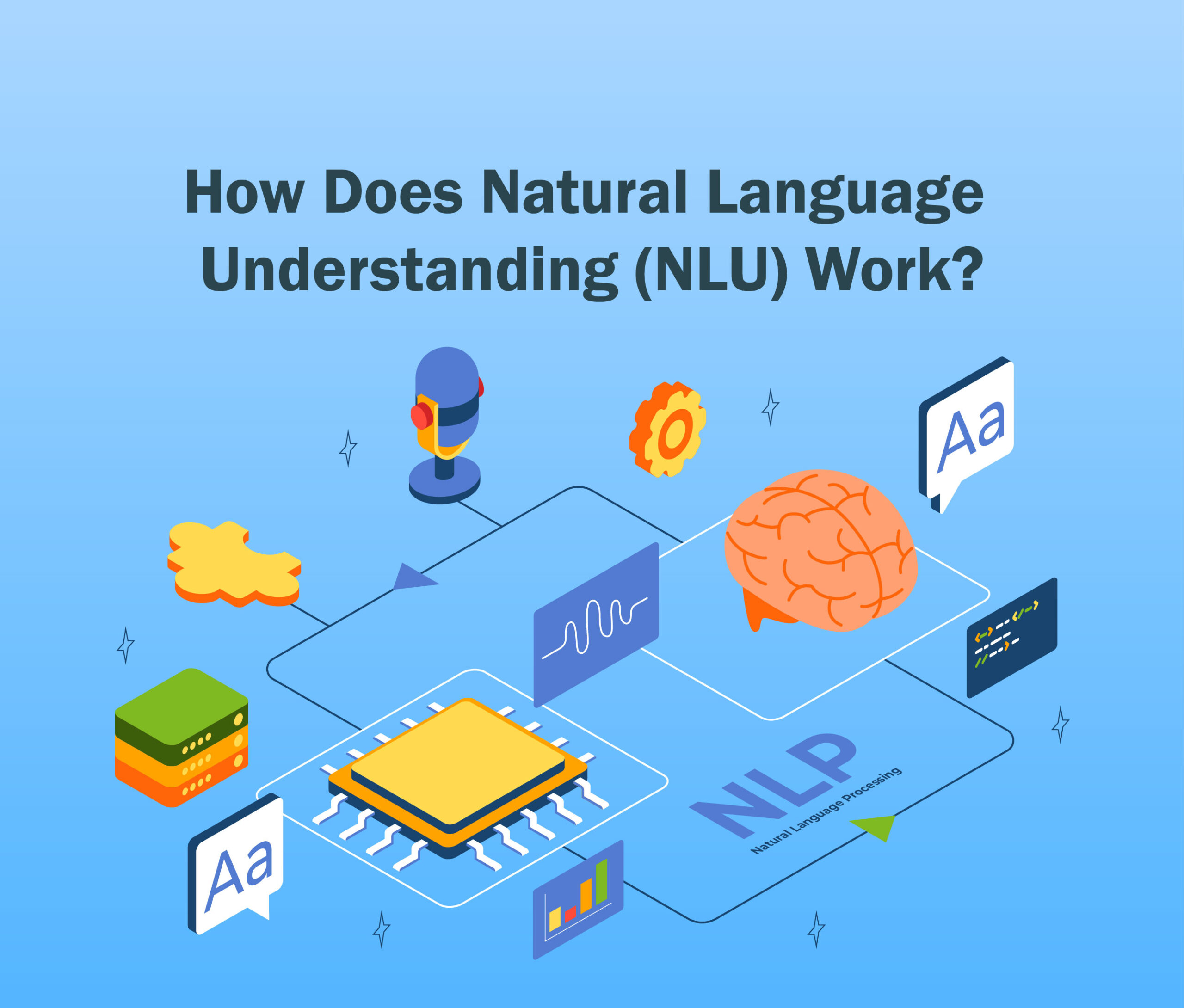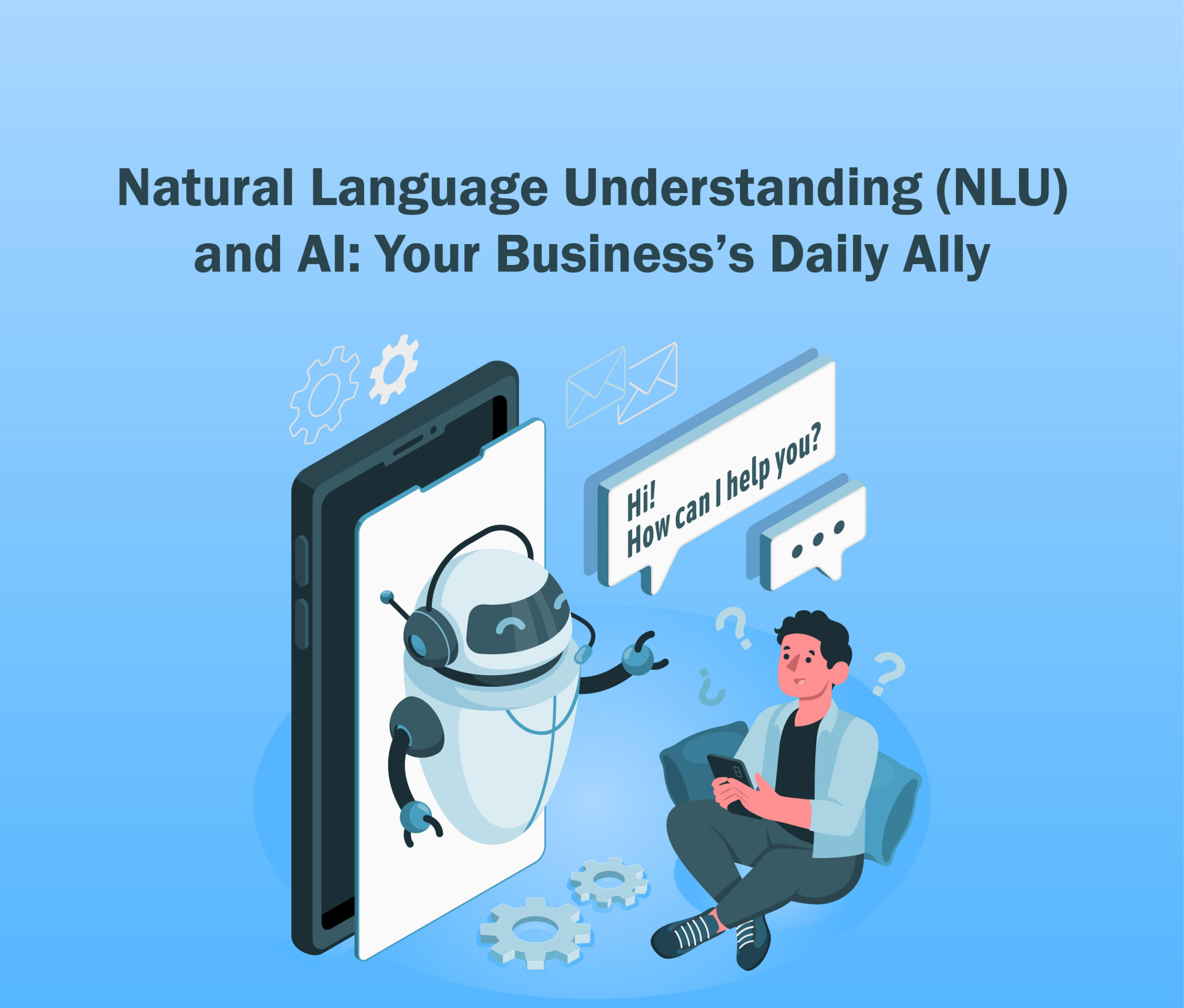Language wields immense power – from conveying emotions to influencing actions. Imagine if it could also unveil thoughts.
Natural language understanding (NLU) is at the frontier of AI.
Computers lack human cognition, but for them to possess our intelligence, grasping human speech is crucial. This is where NLU steps in. It’s the bridge to a more empathetic AI future.
Further on, let’s break down in depth what it comprises, incorporating all the core aspects of this technology.
What is Natural Language Understanding (NLU)?
The capacity of a computer to comprehend human language is known as NLU. It can be used for a variety of purposes, including voice assistants, chatbots, and automatic translation services.
Parsing is the most fundamental type of NLU because it takes text written in natural language and transforms it into a structured format that computers can comprehend.
For instance, the phrase “hello world” would be transformed into the appropriate noun and verb forms, while the phrase “I am hungry” would be divided into the two clauses “I am” and “hungry”.
NLU activities other than parsing include entity recognition, sentiment analysis, and semantic role labeling.
How Does Natural Language Understanding (NLU) Work?
 NLU involves processing a given input in the form of natural language, such as a sentence or paragraph, to generate an output. Natural language understanding algorithms decode human language, extracting meaning and intent from text or speech for analysis and comprehension.
NLU involves processing a given input in the form of natural language, such as a sentence or paragraph, to generate an output. Natural language understanding algorithms decode human language, extracting meaning and intent from text or speech for analysis and comprehension.
The procedure can be segmented into these three stages:
- Tokenization: During the initial phase of NLU, the input is divided into separate words or tokens, encompassing punctuation, symbols, and words from various languages. This process is fundamental to understanding and analyzing text.
- Lexical Analysis: Afterward, the tokens are inserted into a lexicon that categorizes them based on their grammatical function, such as distinguishing between nouns and verbs. Additionally, it encompasses identifying phrases that should be allocated to a distinct database for future utilization.
- Syntactic Analysis: In the next stage, the grammatical structure of the tokens is examined in detail, including determining the specific roles of each word and resolving any potential ambiguity arising from multiple interpretations of those roles.
Why Does Natural Language Understanding (NLU) Matter?
NLU has a crucial role in the business world as it involves deciphering the intended meaning of the written text. Utilizing NLU software can give businesses an edge by unveiling unprecedented perspectives on their data.
Utilizing natural language understanding solutions to analyze data unveils novel approaches that can aid in making informed business decisions.
Let us take an example to understand this. Imagine being an e-commerce business with access to information regarding your customers’ purchasing habits and the timing of their purchases.
By utilizing software that comprehends natural language, you can analyze your customer’s actions and effectively determine the most suitable products to offer them in the future.
Natural language understanding solutions can be employed by companies in their marketing campaigns to effectively reach and engage specific audience segments with tailored messages that align with their existing interests. Furthermore, this software has the capability to anticipate the future needs and preferences of these individuals.
Natural Language Understanding (NLU) and AI: Your Business’s Daily Ally
 Artificial intelligence (AI) finds application in multiple areas to optimize everyday business operations. A few examples are:
Artificial intelligence (AI) finds application in multiple areas to optimize everyday business operations. A few examples are:
● VAs (Virtual Assistants)
Virtual Assistants (VAs) are software applications that can handle simple tasks for you, such as setting reminders, sending emails, or organizing appointments. They can seamlessly integrate with various devices and applications, eliminating the need to switch between multiple programs when you need to complete tasks efficiently. For instance, you can run online errands or compose emails without any hassle while preparing to wrap up your workday in the office.
● Chatbots
Chatbots employ AI to simulate conversations, offering optimal responses to queries. They save time, allowing teams to focus on growth. Customers benefit by spending less time on support and more on purchases or services.
● Customer Support
Customer service representatives are utilizing natural language understanding technology and resources to gather customer information during phone conversations without having to manually type each question.
Customer service agents are using NLU technology and NLG tools to assist customers with intricate problems, resulting in tailored responses that are specific to each customer’s circumstances. This eliminates the need for agents to type complete sentences manually.
● Market Intelligence
Market intelligence software offers a powerful edge by swiftly gathering public information on companies and individuals from various sources. It seamlessly integrates with NLU for enhanced data comprehension.
● Conversational Interfaces
Voice-activated devices like Google Home and Amazon Alexa use natural language understanding (NLU) to comprehend and respond to human speech effectively. This enables seamless interaction by interpreting words, sentences, and intent. An everyday example of this is voice recognition technology, like Alexa, which converts spoken words into text for computer processing.
Facebook’s Messenger incorporates AI, NLU, and natural language processing (NLP) to assist users in enhancing their communication with contacts residing in distant locations.
Final Thoughts
The primary aim of natural language understanding (NLU) is to comprehend human dialogue in a way that interacting with machines becomes as effortless as engaging with another human being. NLU entails transforming unorganized data into a more comprehensible format. It is integral to extracting valuable insights from raw data for business purposes. In the coming years, NLU technologies will significantly influence communication technology, assisting traditional companies in transitioning from data-focused platforms to intelligence-driven entities.


